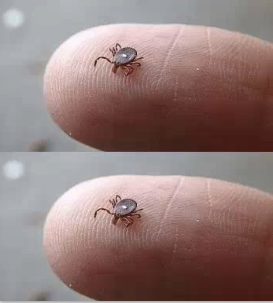
A few weeks ago, while mowing my yard with my old, sputtering mower, my golden retriever Mochi rested lazily beneath
the oak tree. Everything felt peaceful—until I felt a faint tickle on my ankle. I thought it was a mosquito, but when I looked down, my stomach dropped.
A tiny black dot clung to my skin, unmoving. I pulled it off carefully and saw the telltale white spot—a lone star tick.
Why Ticks Are No Joke
I can handle mosquitoes and even bee stings, but ticks? They trigger instant panic. These small parasites aren’t just
gross—they can transmit dangerous diseases. The lone star tick, in particular, is notorious for spreading
illnesses and even causing alpha-gal syndrome, a red meat allergy.
Meet the Lone Star Tick
Named for the single white spot on the female’s back, this tick is anything but harmless. Unlike most ticks
that wait for a host to brush past, the lone star tick actively hunts, drawn by body heat and movement.
They thrive in grassy or wooded areas, making quick removal and prevention vital.
Next time you’re outdoors, check your clothing and pets. A moment of caution can save you from a serious health scare.